By Matt Dillon, head of commercial vehicles at LeasePlan UK
The electric vehicle (EV) transition is all around us. From the likes of Tesco to British Gas and even the UK Government, large businesses everywhere have pledged to make the switch.
The benefits of making such a transition are now clear to all – improved sustainability credentials, lower whole life costs, and keeping up with net zero commitments. Plus, the cost of doing nothing is rapidly growing with the expansion of clean air zones all over the country.
For fleets with thousands of vehicles, the task of electrifying thousands of vehicles might seem daunting. But having large numbers needn’t be off-putting. In fact, it’s all the more reason to get ahead on the road to electric, now.
How does electrifying a large fleet differ from a smaller fleet?
The biggest difference between a mission critical fleet and a standard business fleet isn’t just the size.
Larger fleets with 2,000 or more vehicles might be more complex to tackle, however, more often than not that’s due to the vehicle makeup, not just the total number of vehicles.
Do you have a mixture of cars and LCVs, even a few HGVs? This may be where things start to get complicated.
For nationwide fleets, you also have to consider where your vehicles are based. Do you have hubs in rural counties? Are you mainly operating within city centres?
Most large fleets span both of these environments, so the likelihood that your operations will be easily replicated in every region is slim.
Then there’s the added element of risk that comes with a larger, more diverse fleet. The more vehicles and people you’re dealing with, the more pressure there is to get things right the first time around and avoid potentially costly mistakes.
So, all of those things considered, how does the process differ?
Step one: Do your homework
The first step to any EV transition is to do your research. Most fleet managers consider this to be looking into charge point locations and the makes and models of EVs you need.
However, what should really come first is acquiring a deeper understanding of your existing fleet operations.
In some cases, you can’t simply take your diesel vehicles and replace them with an electric equivalent, so this is your opportunity to make efficiencies and consider how you could replicate or even improve your operations with EVs.
Instead of skipping to the end stage of choosing your new models, take this opportunity to improve efficiency, safety, welfare, and make significant cost savings. For example, could you reduce the loads that your vehicles carry to maximise EV range and reduce charging frequency?
Surveying your driver population can help to inform this change. Not everyone lives in a house with a driveway or dedicated parking space, so take time to consider how these employees will charge their vehicles whilst out and about.
Step two: Solve the charging puzzle
The majority of mission critical fleets will need a mixed charging solution, spanning depot, home, and public chargers.
Depot charging presents new challenges for large fleets – not only do you need to consider how many sites you have, but also the finer details about operations in every location.
If you lease your site, how long is left in your contract? Do you expect to move or expand in the coming months or years? Have you got enough network capacity? Can your site even accommodate EV chargers, or do you need to move?
One of the most potentially costly elements of electrification for large fleets could be capacity upgrades.
Upgrading the local grid can be expensive, and you also need to factor in any preliminary work with energy providers.
To facilitate the change, your business may need a new contract with your power supplier, meaning additional decision makers and stakeholders need to be on board.
The next thing on your checklist should be to think about how long it will take to get home chargers installed. Lead times for chargers are high at the moment, as they are with electric vehicles. But that doesn’t mean now is a good time to hold off.
There’s a lot to think about before vehicles land in your office car park and on employee driveways, such as how you’ll re-imburse drivers for their increased energy bills at home. So, don’t press pause – use this additional time to your advantage.
Step three: Prioritise replacing simpler vehicles
The critical thing to note here is that one size does not fit all, as not every vehicle in a mission critical fleet does the same job. You can’t just take the electrification process for one vehicle and multiply it by 2,000.
Because of this, it’s best to start with the ‘easy’ wins. For example, if your fleet make up is 60% cars and 40% refrigerated delivery vans, it’s much easier to look at the car portion of the fleet first.
Not only are there more models available, but our industry generally has a much clearer understanding of what needs to be put in place. The electric van market is certainly improving, but it has some way to go to catch up with the electric car market.
Another benefit to starting with the simpler vehicles is that, surprisingly to many, a bespoke van conversion can be a significant proportion of the overall cost. And, if you get it wrong, the likelihood is that your bespoke van may not be re-sellable without incurring additional costs. Electric company cars, on the other hand, are easily re-sold if they’re not quite right.
Use your fleet size to your advantage
It may be true that the more wheels you have on the road, the more complex the task. But, equally, the greater the benefits of your success in saving money and hitting ESG goals.
As we approach the 2030 ban on the sale of new ICE vehicles and look to a future with cleaner air, the role of large fleets is clearer than ever - this is your chance to lead the charge to electrification and shape the future of fleet.
From Fleet News
> Interested in comparing electric vehicle data? Check out our EV tool.
> Interested in ensuring the efficient use of EVs. Check out our dedicated editorial sections: Insight & policy | EV news | Charging & infrastructure | Costs & incentives | Benefit-in-kind | EV case studies | EV road tests






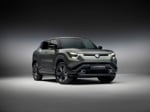
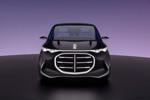
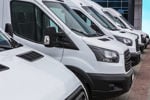
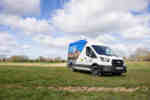

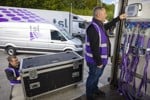



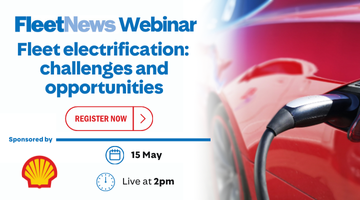


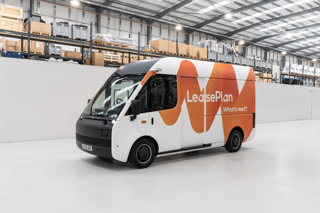
Login to comment
Comments
No comments have been made yet.